Even if some travelers don’t make it here due to time constraints, the rumor about peaceful and beautiful Cabo de la Vela has definitely spread.
During my last visit to Colombia in 2016, people I met did not talk about this particular getaway, while it seems to be high up on everyone’s wish list this time around.
Those who’ve been to Cabo de la Vela often describe it as one of the most beautiful places in Colombia.
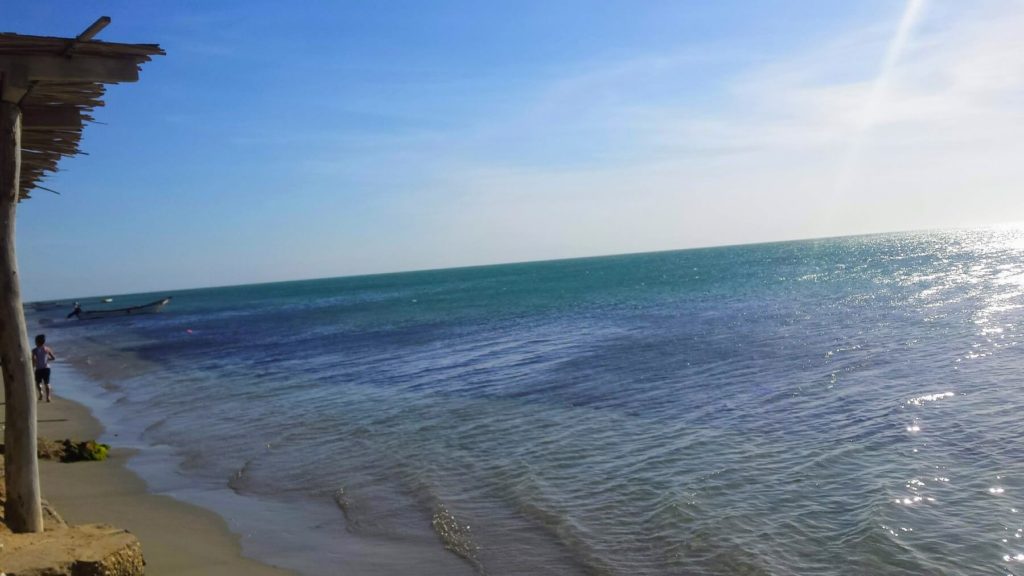
You come to Cabo to unwind. To eat the most delicious (and affordable) seafood, to enjoy the simple and beautiful things in life, to learn how to kitesurf, and to see some of the most gorgeous sunsets and starry skies in the country.
Disconnect, because you won’t find much wifi around, be present, sleep in a hammock 2 meters (literally) from the ocean, and wake up to the sound of the waves.
Most importantly, visit Cabo de la Vela to get a better understanding of the Wayuu culture and to experience a side of Colombia you haven’t seen before.
Traveling To Cabo de la Vela From Palomino
I traveled to Cabo de la Vela from Palomino the local way, which includes 3 types of transport. It’s easy to get here, you just need to be flexible and patient. The trip takes between 4-6 hours, depending on how much flow you have with the connections, which is impossible to know in advance.
You’ll find the details about traveling to Cabo de la Vela from Palomino at the end of this post.
Experience A Different Reality
Most of the locals in Cabo de la Vela are poor and live very simple lives. The houses we pass by on the way are small, basic sheds surrounded by nothing. Most of the locals earn a living by either selling beautiful handmade accessories, such as the well-known Wayuu bags. One bag can take up to a week to create and is often sold for about 50-60.000 COP (15-20 dollars). Others run small posadas or restaurants.
The last 30 minutes before arriving at the small center of Cabo, there is no real road. We are driving through the desert, while making several stops along the way to drop locals off at their homes.

A woman who’s from Cabo tells me that they regularly travel to Uribia, the closest bigger city, to do their grocery shopping and to sell handmade accessories. When we stop by her house, 4 small kids come running barefoot towards the car to greet her. They can’t stop smiling while they are helping her to carry the bags filled with water and food to the house.
This scene repeats itself at the other homes too. Outside of each house there at least 3 kids, often more, eagerly waiting to welcome their parents back home.
The Town Of Cabo de la Vela
Cabo has one main street where small restaurants and posadas are lined up next to each other. You will usually take this road or walk directly on the beach, no matter where you’re heading. At the end of the main road, there are a few kitesurfing schools that also offer accommodation options.
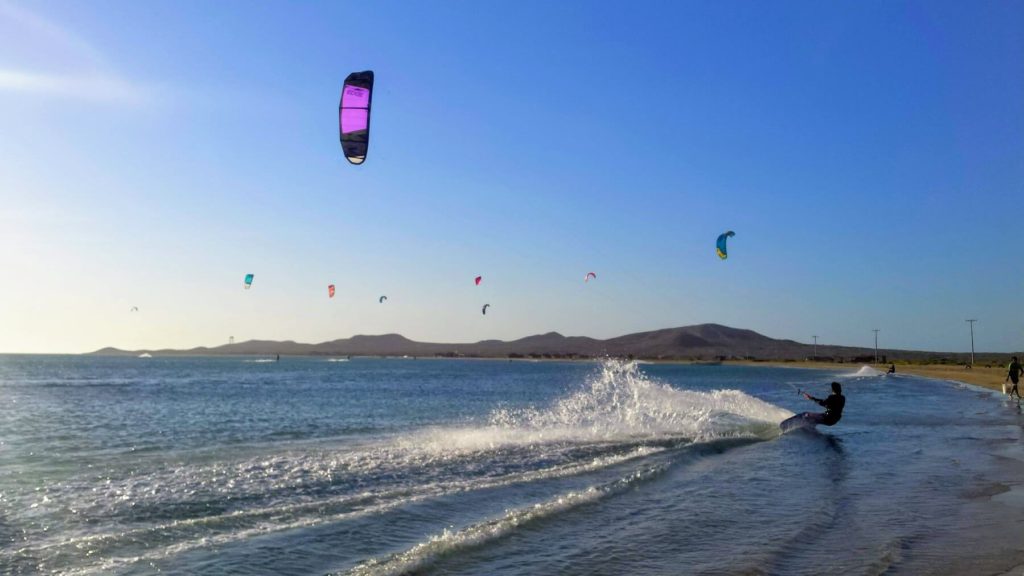
Some of the posadas have private rooms and all of them offer hamacas (hammocks). Once I’ve found my place, I make my way down to one of the local restaurants at the beach which prepares a delicious fish for lunch. Even if I just got here, I can already feel how the tranquility takes over.
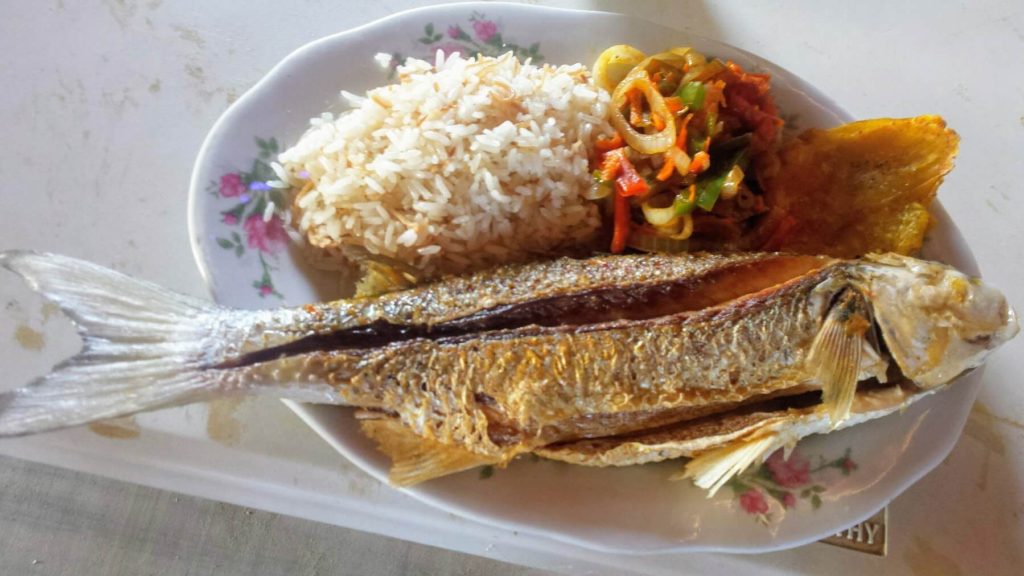
I take a walk along the beach to watch the sunset at the lighthouse. While there are a few agencies with tourist groups there, they leave as soon as the sun sets. We end up having the place to ourselves, while the sky shifts between the most magical colors. This is definitely one of the must-do activities in Cabo.
Local Bingo, Champeta, And Natural Beaches
We continue the night at a local bingo event. Numbers are marked at the bingo trays with popcorn, with the hope of winning a new phone or a kitchen mixer. I’m invited to a party at the go-to bar, a charming venue behind a small pizzeria close by the bar Nomada, to dance Champeta and Vallenato. The ambiance is great and it’s easy to get to know people.
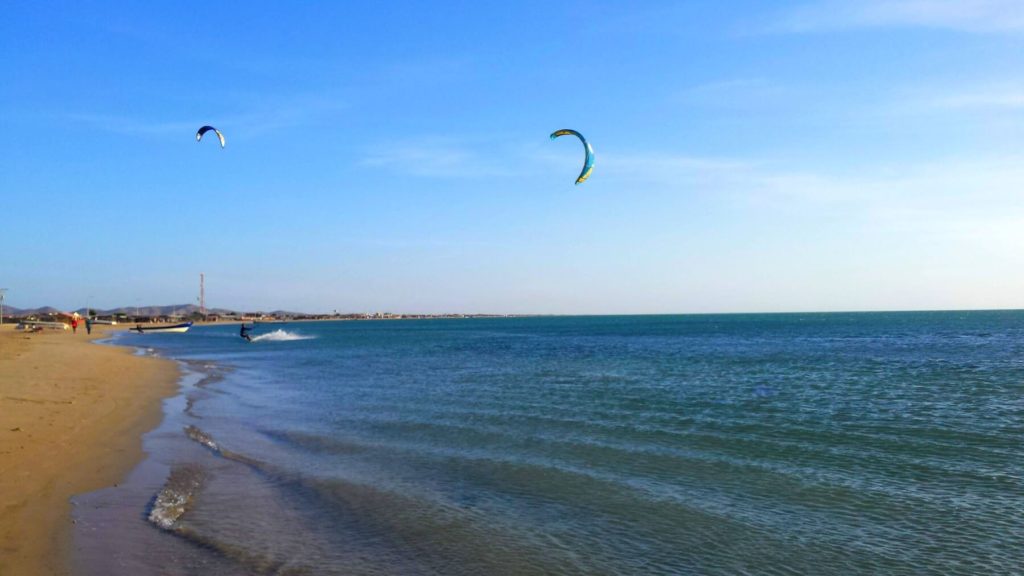
I’m spending the following days chitchatting with the locals and exploring the beautiful places close by. Most of the sights are natural and wild. The peaceful ambiance makes it impossible to stress and easy to feel at home.
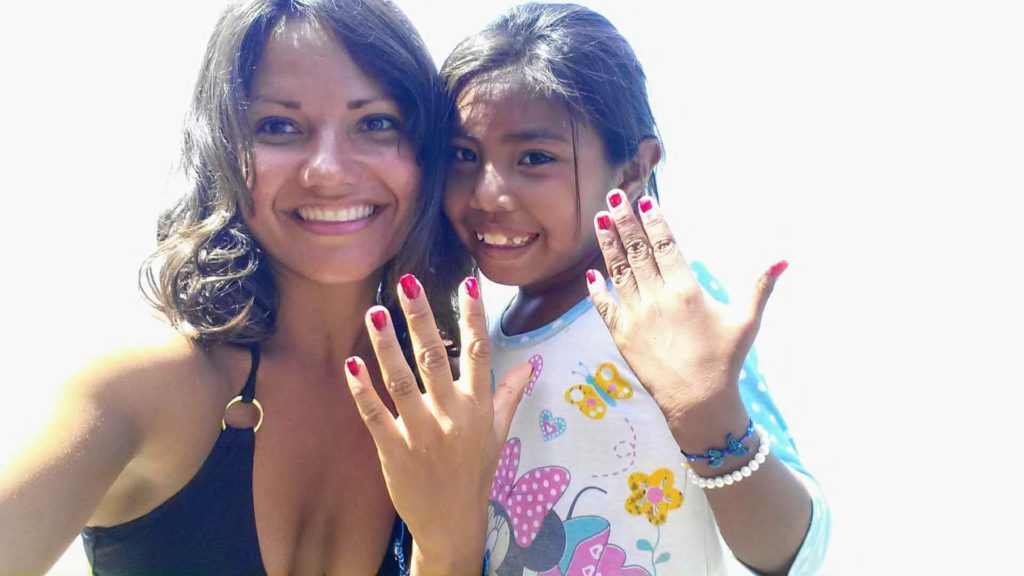
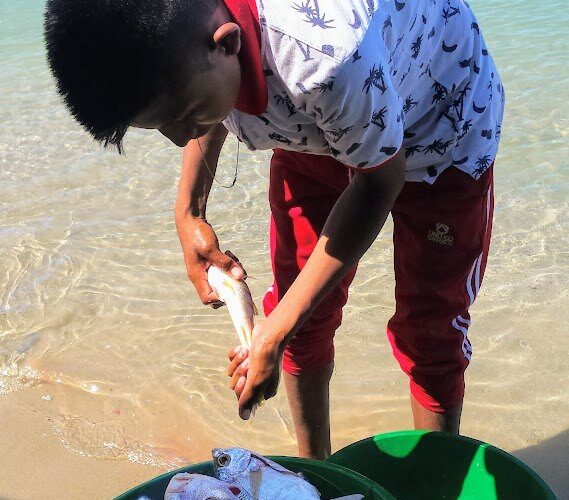
After 3 nights it’s time to return to the connected world.
Even if I could have stayed longer, I feel happy and satisfied, since I know that it won’t be my last time here.
What To Do In Cabo de la Vela
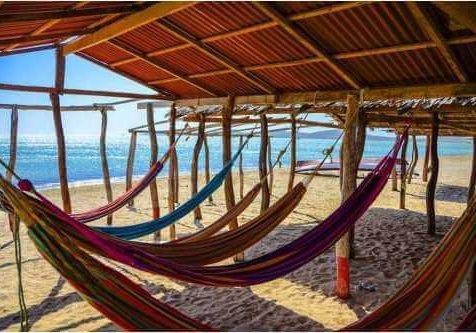
- Take kitesurfing classes. Cabo presents perfect conditions to learn since there are no big waves.
- Catch up on your favorite book in your hammock while enjoying the sound of the waves
- Watch the sunset at the lighthouse
- Bring a bottle of wine to the beach and watch the stars
- Watch the sunset at the beach next to the kite schools while becoming impressed by the locals doing jumps. One of them was surfing with his dog, and the dog loved it. Amazing and beautiful
- Eat lobster with a gorgeous view
- Buy beautiful handicraft and support the local community
- Go dancing with the locals at one of the bars
- Visit Punta Gallinas: I wasn’t able to go this time, but everyone who has been say it’s magical. I’m definitely going next time
Other things that are good to know
- Bring cash, since there are no ATMs and most places don’t accept cards
- I went to Cabo at the end of January and it was so peaceful. It gets much more crowded in December until about that time, so be prepared for that in case you choose to come here then
How To Get To Cabo de la Vela From Palomino
You can drive, take a tour with an agency, or travel the local way. I prefer to travel independently rather than joining a tour if possible for the freedom it gives you. Whatever you decide, it’s recommended to start the journey early to ensure that you find transport and arrive before it gets dark. The desert ‘road’ isn’t very fun to drive in the dark.
From Palomino, you can take one of the busses from the main road to Rio Acha. Ask the driver to drop you off where the buses leave for Uribia. Here, there will be buses and collectivos (a normal car that you share with others. Like an Uber pool that has been around long before Uber was a thing) waiting. Once you get to Uribia, take one of the 4 wheels to Cabo. You will sit in the back with a group of other people, feeling the wind in your hair.
There are also more comfortable cars if you prefer that. You know, where you sit inside the car. 😉 The price doesn’t differ much. I don’t mind the local transport and if you don’t either, just take whatever that arrives first. Be aware that the local cars aren’t a glamorous experience. The locals from Cabo come to Uribia to do their shopping and will bring everything from food to smaller furniture. It gets crowded, but it’s a part of the experience.
Have you been to Cabo de la Vela yet? Feel free to reach out to me with any questions if you’re thinking about going.



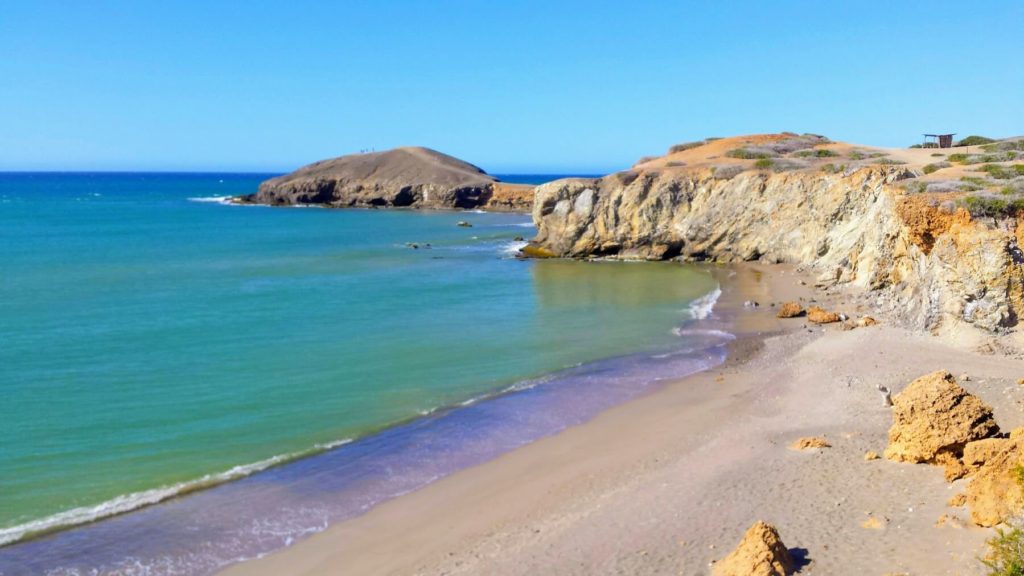
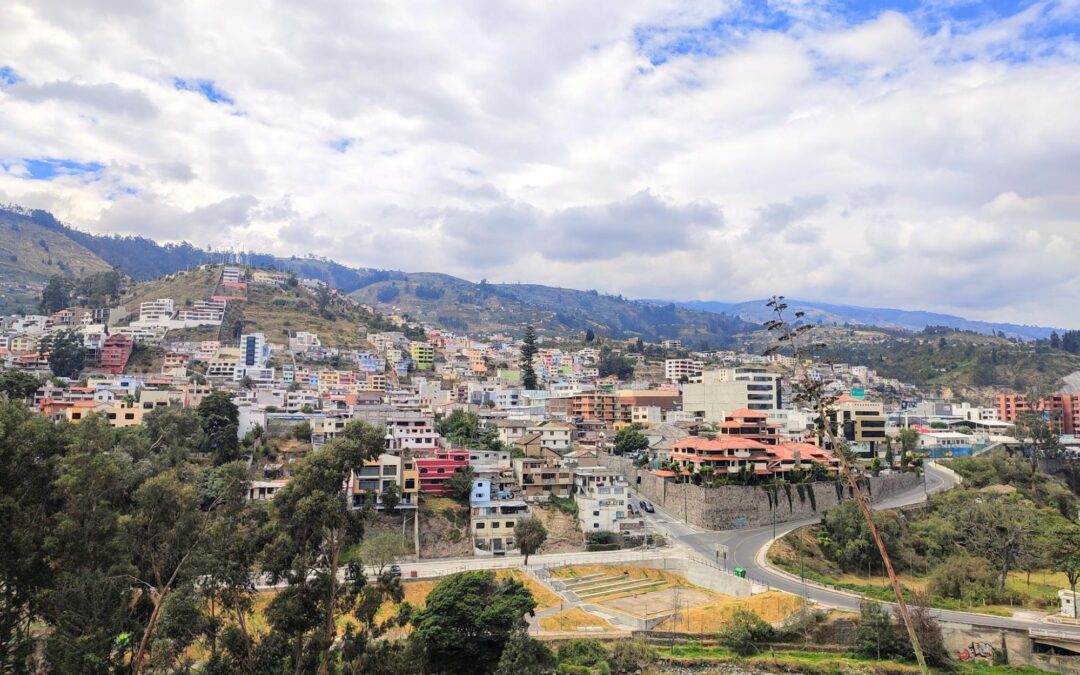



0 comentarios